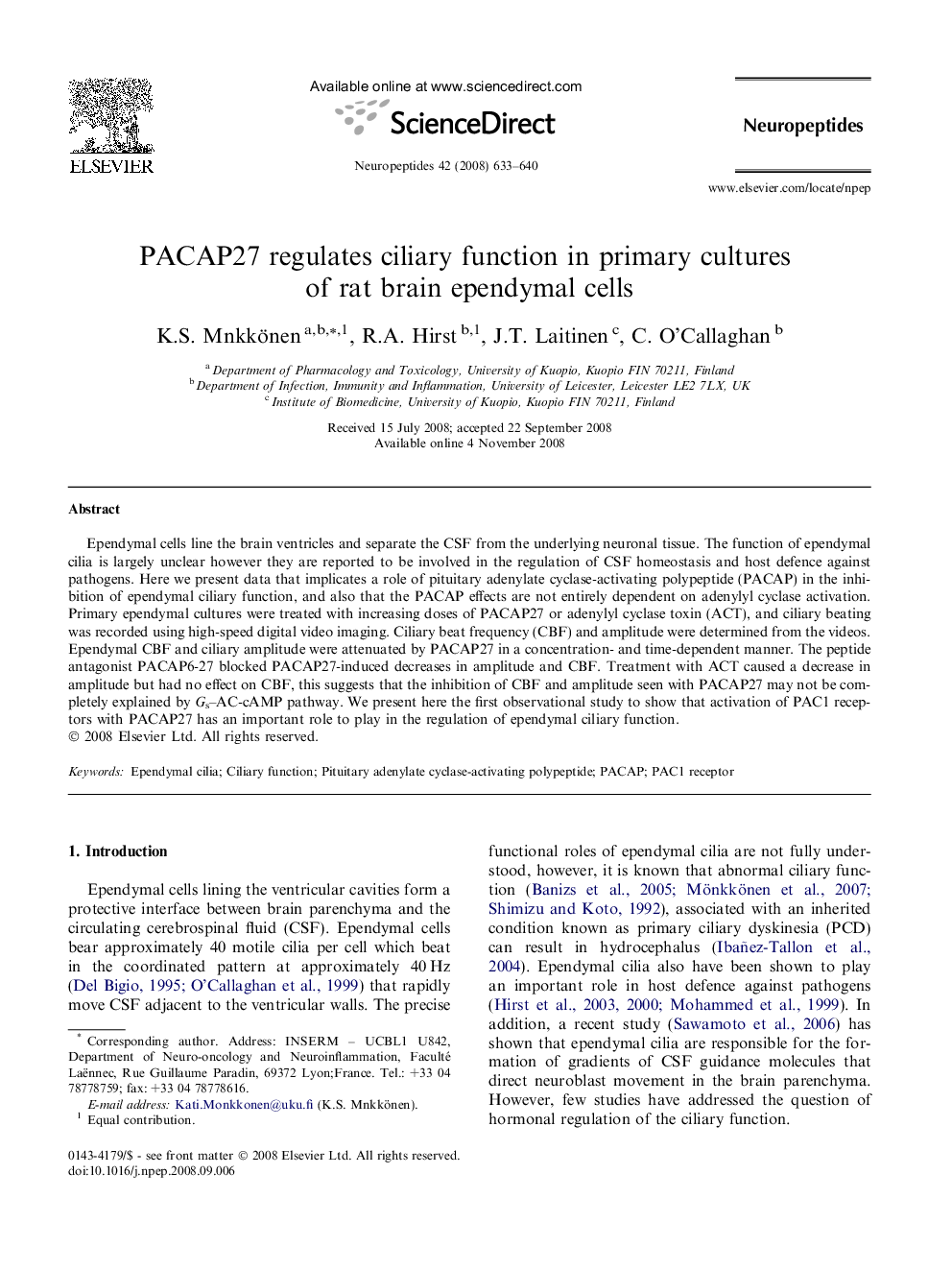| Article ID | Journal | Published Year | Pages | File Type |
|---|---|---|---|---|
| 2808613 | Neuropeptides | 2008 | 8 Pages |
Ependymal cells line the brain ventricles and separate the CSF from the underlying neuronal tissue. The function of ependymal cilia is largely unclear however they are reported to be involved in the regulation of CSF homeostasis and host defence against pathogens. Here we present data that implicates a role of pituitary adenylate cyclase-activating polypeptide (PACAP) in the inhibition of ependymal ciliary function, and also that the PACAP effects are not entirely dependent on adenylyl cyclase activation. Primary ependymal cultures were treated with increasing doses of PACAP27 or adenylyl cyclase toxin (ACT), and ciliary beating was recorded using high-speed digital video imaging. Ciliary beat frequency (CBF) and amplitude were determined from the videos. Ependymal CBF and ciliary amplitude were attenuated by PACAP27 in a concentration- and time-dependent manner. The peptide antagonist PACAP6-27 blocked PACAP27-induced decreases in amplitude and CBF. Treatment with ACT caused a decrease in amplitude but had no effect on CBF, this suggests that the inhibition of CBF and amplitude seen with PACAP27 may not be completely explained by Gs–AC-cAMP pathway. We present here the first observational study to show that activation of PAC1 receptors with PACAP27 has an important role to play in the regulation of ependymal ciliary function.
